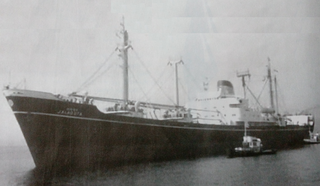
SM U-35 was a German U 31-class U-boat which operated in the Mediterranean Sea during World War I. It ended up being the most successful U-boat participating in the war, sinking 220 merchant ships for a total of 505,121 gross register tons (GRT).

HMS Hythe was a Bangor-class minesweeper built for the Royal Navy during the Second World War.

German submarine U-99 was a Type VIIB U-boat of Nazi Germany's Kriegsmarine during World War II. She was laid down on 31 March 1939 at the Friedrich Krupp Germaniawerft in Kiel as yard number 593. She was launched on 12 March 1940 under the command of Korvettenkapitän Otto Kretschmer and was assigned to the 7th U-boat Flotilla based in Kiel and later in St Nazaire.

SM U-14 or U-XIV was a U-boat or submarine of the Austro-Hungarian Navy during the First World War. She was launched in 1912 as the French Brumaire-class submarineCurie, but captured and rebuilt for service in the Austro-Hungarian Navy. At war's end, the submarine was returned to France and restored to her former name.

German submarine U-46 was a Type VIIB U-boat of Nazi Germany's Kriegsmarine during World War II. She had a highly successful career during the war.

SM U-12 or U-XII was a U-5-class submarine or U-boat built for and operated by the Austro-Hungarian Navy before and during the First World War.
The Type U 66 was a class of five submarines or U-boats operated by the German Imperial Navy during World War I. The class is alternately referred to as the U-66-class or the Type UD. The class was built by Germaniawerft of Kiel to their 506d design as the U-7-class for the Austro-Hungarian Navy. The five boats were sold to the Imperial Germany Navy at the beginning of World War I when it was thought impossible for the submarines to reach the Mediterranean for delivery to Austria-Hungary.
SM U-28 or U-XXVIII was a U-27-class U-boat or submarine for the Austro-Hungarian Navy. U-28, built by the Austrian firm of Cantiere Navale Triestino (CNT) at the Pola Navy Yard, was launched in January 1917 and commissioned in June.
Empire Bruce was a prototype 7,459 GRT cargo ship which was built in 1941 by Sir J Laing & Sons for the Ministry of War Transport (MoWT). She was torpedoed and sunk by U-123 on 18 April 1943.

SS Jalabala was the cargo steamship owned by Scindia Steam Navigation Company Ltd., the British Indian shipping company, which was completed in 1927. She was torpedoed and sunk in the Laccadive Sea west of Cape Comorin by the German submarine U-532 with the loss of five of her 77 crew members on 11 October 1943 during World War II.
SS Cornwallis was a 5,438 gross register tons (GRT) steam merchant ship built in 1921 for the Canadian Government as Canadian Transporter. In 1932 she was transferred to Canadian National Steamships Ltd and renamed SS Cornwallis. She was sunk on 3 December 1944 after being torpedoed by the German submarine U-1230 on its way to St John with a loss of 43 crew.
SS Graciosa was a small freighter built during the First World War for James C. Gould and Co. under the name of Greltoria. Completed in 1917, she was sold while fitting out to the Bromport Steamship Co. and renamed Rabymere for use on their West African routes. The ship was sold to the Moss Steamship Co. in 1923 when the Lever Brothers closed down Bromport and sold off its ships. Moss renamed the ship as Edfou before selling it to Skibs A/S Fjeld in 1929 who renamed it Graciosa. During the Second World War, the ship was badly damaged during the Bombay Docks Explosion in early 1944 and was declared a constructive total loss and subsequently scrapped.
SS Colemere was a small freighter built during the First World War. Completed in 1915, she was intended for the West African trade. The ship was sunk by the German submarine SM U-105 in December 1917 with the loss of four crewmen.
SS Delamere was a small freighter built during the First World War. Completed in 1915, she was intended for the West African trade. The ship was sunk by the German submarine SM U-70 in April 1917 with the loss of 10 crewmen.
SS Eskmere was a small freighter built during the First World War. Completed in 1916, she was intended for the West African trade. The ship was sunk by the German submarine SM UC-75 in October 1917 with the loss of 20 crewmen.
SS Redesmere was a small freighter built during the First World War. Completed in 1915, she was intended for the West African trade. The ship was sunk by the German submarine SM U-70 in October 1917.
SS Thorpehall was a small freighter built before the First World War. Completed in 1910, she was intended for the West African trade. During the Spanish Civil War of 1936–1939, the ship was sunk by Nationalist bombers in May 1938.
SS Esemplare was a small freighter built during the first decade of the 20th century. Completed in 1902, she was intended for the West African trade. Sold to an Italian company shortly before the beginning of the First World War in 1914, the ship was captured and scuttled by the German submarine SM UC-27 in August 1917.
SS Saturn was a small freighter built before the First World War. Completed in 1906, she was intended for the West African trade. The ship was captured and scuttled by the German submarine SM U-57 in October 1916.
SS Gro was a small freighter built in Scotland during the 1890s. Completed in 1895, she was sold to A Swedish company in 1903 and then to a Norwegian company in 1916. During the First World War the ship was sunk by the German submarine SM UC-47 in August 1917.





